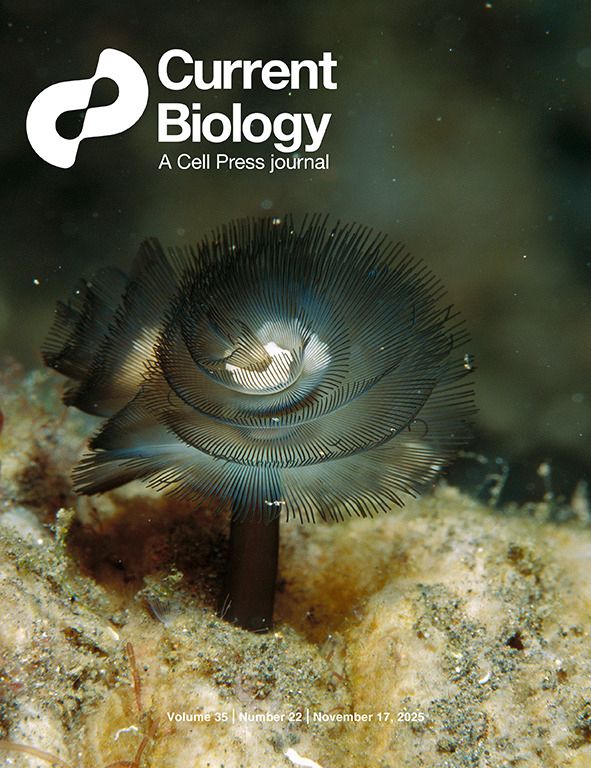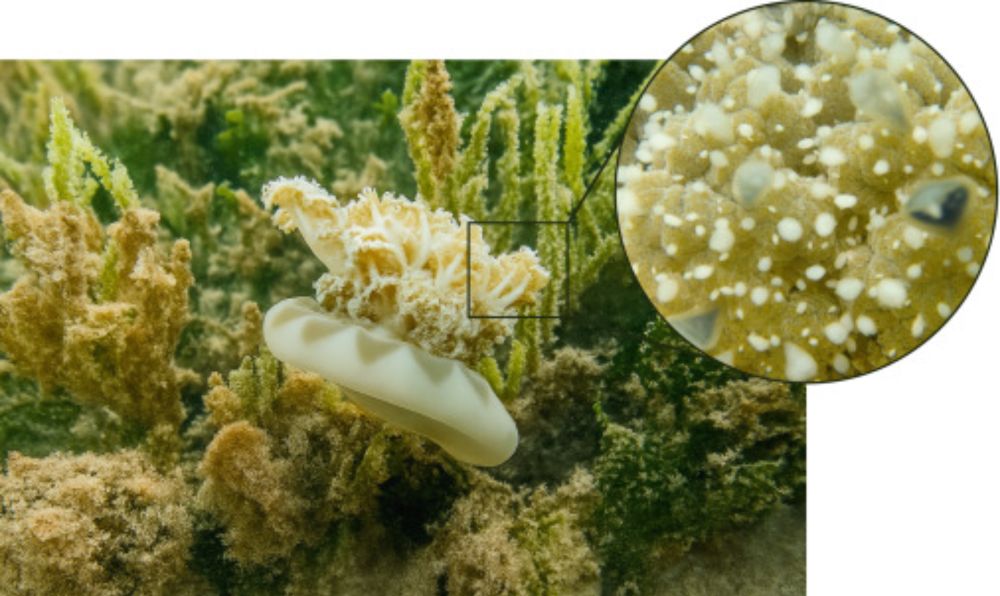
https://www.cell.com/current-biology/home
Part of CellPress @cellpress.bsky.social

"Genomic evidence of a complex supergene system linking dispersal to social polymorphism"
#Myrmecina_graminicola
Mona,S., Gay,E.J., Ducancel,J., Laso-Jadart,R., Chifflet-Belle, P., Doums,C. @isyeb.mnhn.fr @ephe-psl.bsky.social et al.
🐜 www.cell.com/current-biol...

"Genomic evidence of a complex supergene system linking dispersal to social polymorphism"
#Myrmecina_graminicola
Mona,S., Gay,E.J., Ducancel,J., Laso-Jadart,R., Chifflet-Belle, P., Doums,C. @isyeb.mnhn.fr @ephe-psl.bsky.social et al.
🐜 www.cell.com/current-biol...
Our new study in Curr Biol @currentbiology.bsky.social analyzes how CYP707A1 promoter variation drives an evolutionary trade-off between stomatal defense and gas exchange across Brassicaceae species.
Free-access link:
authors.elsevier.com/a/1m7H93QW8S...
Our new study in Curr Biol @currentbiology.bsky.social analyzes how CYP707A1 promoter variation drives an evolutionary trade-off between stomatal defense and gas exchange across Brassicaceae species.
Free-access link:
authors.elsevier.com/a/1m7H93QW8S...

The Ringelmann effect, first described in humans, applies to many cooperative systems, but a recent CB paper showed how weaver ants overcome it.
Just one example where the (hu)manosphere could learn from ants...
www.cell.com/current-biol...

The Ringelmann effect, first described in humans, applies to many cooperative systems, but a recent CB paper showed how weaver ants overcome it.
Just one example where the (hu)manosphere could learn from ants...
www.cell.com/current-biol...
www.cell.com/current-biol...

www.cell.com/current-biol...
This study sets the stage for understanding the origins of novel (vocal) behaviors.
Big shout out to the main architects of this work @xmikezheng20.bsky.social and @cliffscience.bsky.social
Vocal repertoire expansion in singing mice by co-opting a conserved midbrain circuit node
www.cell.com/current-biol...

This study sets the stage for understanding the origins of novel (vocal) behaviors.
Big shout out to the main architects of this work @xmikezheng20.bsky.social and @cliffscience.bsky.social
Vocal repertoire expansion in singing mice by co-opting a conserved midbrain circuit node
www.cell.com/current-biol...

Vocal repertoire expansion in singing mice by co-opting a conserved midbrain circuit node
www.cell.com/current-biol...
www.cell.com/current-biol...

www.cell.com/current-biol...
Oliver Hobert revisits this half a century old concept and show cases how out may inform our understanding of #neuron #evolution.
www.cell.com/current-biol...

Oliver Hobert revisits this half a century old concept and show cases how out may inform our understanding of #neuron #evolution.
www.cell.com/current-biol...

Ectopic head regeneration after nervous system ablation in a sea anemone: Current Biology www.cell.com/current-biol...

Ectopic head regeneration after nervous system ablation in a sea anemone: Current Biology www.cell.com/current-biol...

Researchers from our lab incl. Leonie Baier & @laurastidsholt.bsky.social discovered that the fringe-lipped bats of Panama hunt for prey near their own body size - similar to large cats!
doi.org/10.1016/j.cu...
Fotos: Grant Maslowski




Researchers from our lab incl. Leonie Baier & @laurastidsholt.bsky.social discovered that the fringe-lipped bats of Panama hunt for prey near their own body size - similar to large cats!
doi.org/10.1016/j.cu...
Fotos: Grant Maslowski
🦇
Leonie Baier & team show how👇
www.cell.com/current-biol...

🦇
Leonie Baier & team show how👇
www.cell.com/current-biol...
www.cell.com/current-biol...

www.cell.com/current-biol...
www.cell.com/current-biol...

#wheat provides 1 in 5 calories humans consume 🌾
This primer traces its evolution, domestication and looks at future challenges for.
www.cell.com/current-biol...

#wheat provides 1 in 5 calories humans consume 🌾
This primer traces its evolution, domestication and looks at future challenges for.
www.cell.com/current-biol...
🐜🐜🐜🐜🐜🐜🐜🐜🐜🐜🐜🐜
Michael Gross reports
www.cell.com/current-biol...

🐜🐜🐜🐜🐜🐜🐜🐜🐜🐜🐜🐜
Michael Gross reports
www.cell.com/current-biol...
🪼🙃
Find out about their amazing biology here👇
www.cell.com/current-biol...
by Noémie Buratto& @elisjthore.bsky.social

🪼🙃
Find out about their amazing biology here👇
www.cell.com/current-biol...
by Noémie Buratto& @elisjthore.bsky.social
Baier et al 2025 @currentbiology.bsky.social Extreme hunting efficiency in a carnivorous bat
doi.org/10.1016/j.cu...

Baier et al 2025 @currentbiology.bsky.social Extreme hunting efficiency in a carnivorous bat
doi.org/10.1016/j.cu...
www.cell.com/current-biol...
On the cover, a male Victoria's riflebird doing his best to dazzle a female (or screaming at the white blob?)
Paper & dispatch here👇
www.cell.com/current-biol...
www.cell.com/current-biol...

www.cell.com/current-biol...
On the cover, a male Victoria's riflebird doing his best to dazzle a female (or screaming at the white blob?)
Paper & dispatch here👇
www.cell.com/current-biol...
www.cell.com/current-biol...



